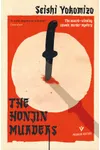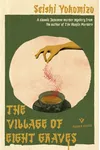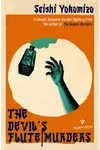Picture a Japanese storyteller who spun chilling mysteries that gripped a nation during the Showa era—meet Seishi Yokomizo! Born in Kobe in 1902, this master of crime fiction created the unforgettable detective Kosuke Kindaichi, blending intricate plots with Japanese traditions. His golden age novels, filled with locked-room puzzles and family secrets, still thrill readers worldwide.
Despite battling tuberculosis and wartime struggles, Yokomizo’s passion for detective stories—sparked by childhood favorites like Arthur Conan Doyle—drove him to redefine Japanese mystery fiction. Let’s dive into his life, works, and lasting legacy!
The Making of Seishi Yokomizo
Seishi Yokomizo was born on May 24, 1902, in Kobe, Hyōgo Prefecture, where his love for detective tales took root. Initially set to inherit his family’s pharmacy after graduating from Osaka Pharmaceutical College, he was lured to Tokyo by literature’s call, encouraged by mystery pioneer Edogawa Rampo. In 1921, while working at Daiichi Bank, he published his first story in Shin Seinen magazine. By 1926, he joined Hakubunkan publishing, later becoming a full-time writer in 1932 despite health and financial hardships.
World War II brought censorship and paper shortages, stalling his career. Yet, Yokomizo’s resilience shone through. Joking he’d either succumb to tuberculosis or starvation, he persevered, emerging post-war as a literary star with a devoted fanbase.
Seishi Yokomizo’s Unforgettable Stories
Yokomizo’s genius lies in his 77 Kosuke Kindaichi novels, which marry Western-style detective fiction with Japanese settings. His scruffy, brilliant detective navigates complex mysteries, often in rural villages steeped in tradition. The Honjin Murders (1946), a locked-room classic set in a snowbound mansion, won the first Mystery Writers of Japan Award in 1948. It introduces Kindaichi solving a gruesome wedding-night murder, inspired by John Dickson Carr’s intricate plots.
The Inugami Curse (1951) unravels a wealthy clan’s secrets after a patriarch’s bizarre will sparks gruesome killings. Its blend of family drama and chilling suspense inspired two Kon Ichikawa films. The Village of Eight Graves (1950) weaves a cursed village’s legend into a Gothic thriller, while Death on Gokumon Island (1948) channels Agatha Christie’s And Then There Were None with its isolated, pirate-plagued setting. Yokomizo’s style—rich with historical ties, clever twists, and psychological depth—made his stories timeless.
His works, serialized in magazines like Houseki, captivated post-war Japan, offering escapism through intricate puzzles. With over 55 million books sold, his influence extended to stage, TV, and even a 1970s funk album by The Mystery Kindaichi Band!
Why Seishi Yokomizo Matters
Yokomizo revolutionized Japanese mystery fiction, earning the title 'Japan’s John Dickson Carr.' His Kosuke Kindaichi series set the standard for post-war detective novels, blending global influences with local culture. His focus on family dynamics, honor, and rural traditions captured the Showa era’s social shifts, resonating deeply with readers. The Seishi Yokomizo Prize, established in 1980, continues to honor new mystery talent, cementing his legacy.
Today, translations by Pushkin Vertigo bring his work to English audiences, delighting fans of golden age mysteries. From locked-room conundrums to haunting curses, Yokomizo’s stories remain a thrilling bridge between East and West, inspiring writers like Yukito Ayatsuji and global crime fiction enthusiasts.
About Seishi Yokomizo
- Born: May 24, 1902, Kobe, Japan
- Died: December 28, 1981, from colon cancer
- Key Works: The Honjin Murders, The Inugami Curse, The Village of Eight Graves
- Awards: First Mystery Writers of Japan Award (1948)
- Fun Fact: His detective inspired a 1970s funk album!
Snag The Honjin Murders and dive into Seishi Yokomizo’s thrilling world of Japanese mysteries!





